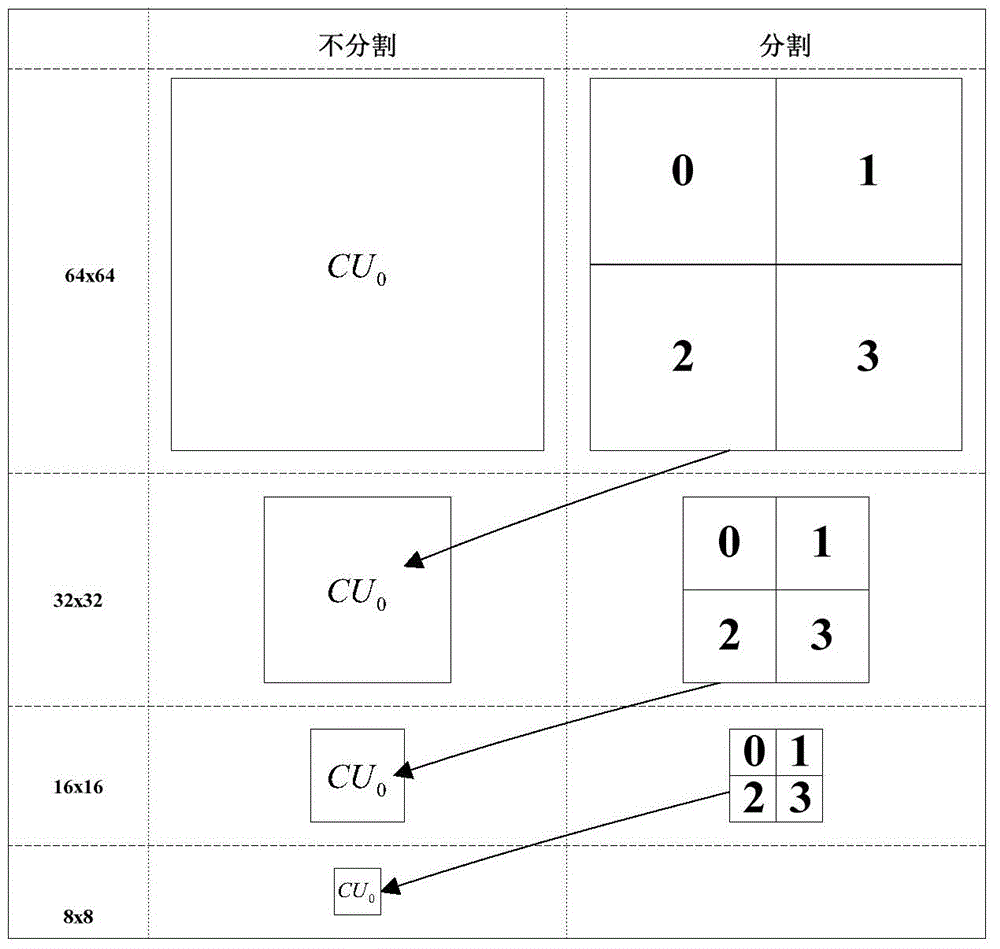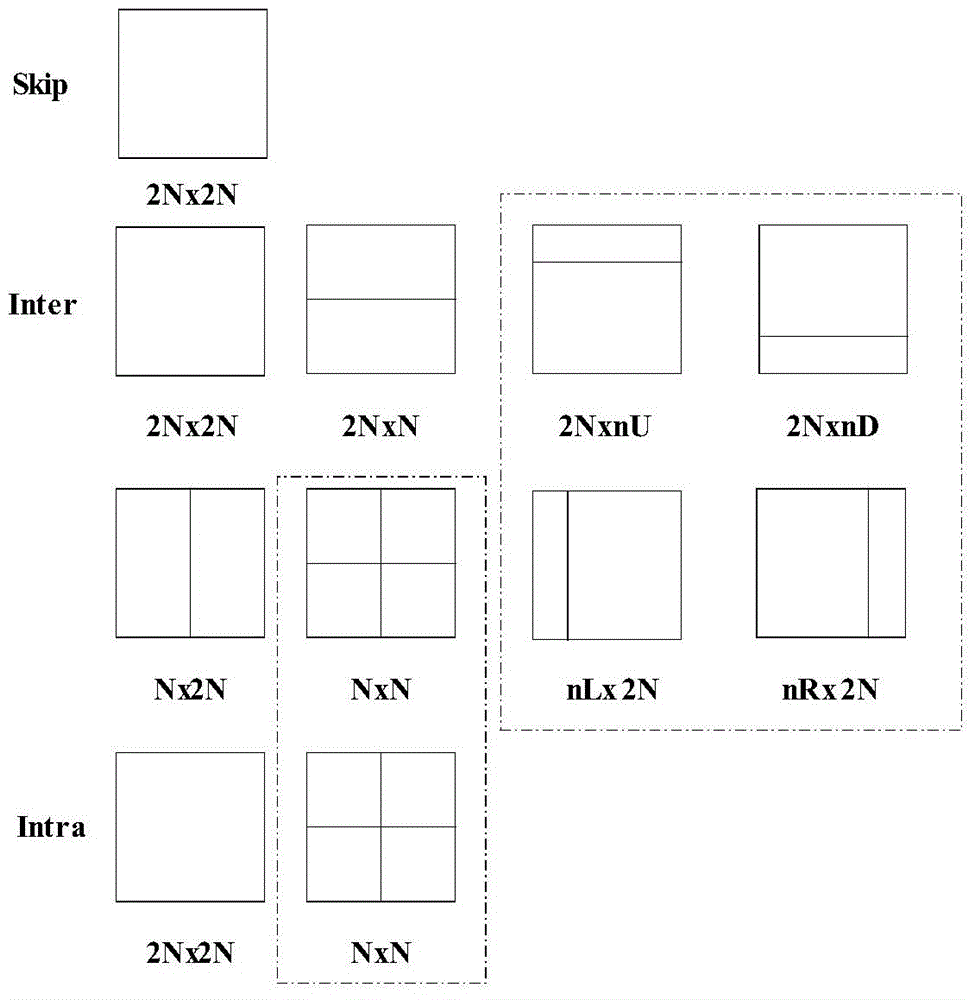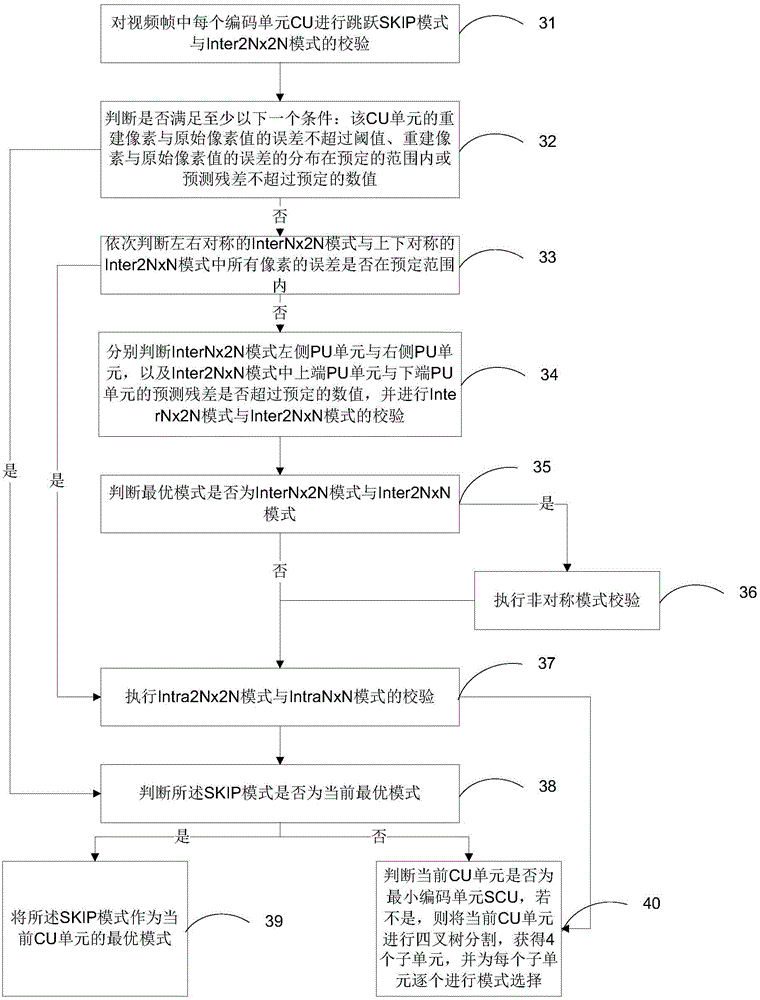Interframe predication quick mode selecting method for high-performance video coding
A video coding and inter-frame prediction technology, applied in the field of video coding, can solve the problems of high complexity at the coding end, inability to apply real-time requirements, and applications that cannot meet the strict real-time requirements of mobile devices, so as to ensure coding compression performance, low-complexity effects
- Summary
- Abstract
- Description
- Claims
- Application Information
AI Technical Summary
Problems solved by technology
Method used
Image
Examples
Embodiment 1
[0021] image 3 It is a flow chart of a fast mode selection method for inter-frame prediction of high-performance video coding provided by Embodiment 1 of the present invention. Such as image 3 As shown, it mainly includes the following steps:
[0022] Step 31 , check the SKIP mode and the Inter2Nx2N mode for each coding unit CU in the video frame.
[0023] In order to facilitate subsequent mode verification, the current 2Nx2N block can usually be further divided in advance. For example, the current CU unit can be divided into 4 small parts (such as figure 1 The division shown is divided into 4 subunits), which is beneficial to combine these four small parts to form the type of PU, such as 2NxN and Nx2N.
[0024] Step 32. Determine whether at least one of the following conditions is met: the error between the reconstructed pixel and the original pixel value of the CU unit does not exceed a threshold, the distribution of the error between the reconstructed pixel and the or...
Embodiment 2
[0068] According to the method described in Embodiment 1, compared with the existing HEVC standard, it can be seen from the comparison results that the solution of Embodiment 1 of the present invention can save a lot of time while ensuring that the PSNR (Peak Signal-to-Noise Ratio) drops within an acceptable range. time, thereby improving coding efficiency. The comparison results are shown in Table 1:
[0069]
[0070] The scheme of table 1 embodiment one and the comparative result of prior art
[0071] Among them, ΔB represents the percentage of code rate increase, ΔP represents the reduction of PSNR, and ΔT represents time saving; the test condition RA main is the main test condition of random access (RA) in the public test conditions set by the HEVC standard, The conditions are: the data of the video frame is 8-bit precision, that is, the value of each pixel is 0 to 255; 8 frames of video content are used as a group of encoded images, that is, every 8 frames are encoded...
Embodiment 3
[0075] According to the method described in the first embodiment, compared with the fast algorithm adopted by the existing HEVC, it can be seen from the comparison results that the solution in the first embodiment of the present invention can ensure that the PSNR decline is negligible and save a lot of time, thereby improving the coding efficiency . The comparison results are shown in Table 2:
[0076]
[0077] The scheme of table 2 embodiment one and the comparison result of prior art
[0078] Wherein, the test conditions and symbols are the same as those in Example 2. The prior art schemes used in this comparison are scheme 1) and scheme 2) which are improved on the original scheme mentioned in the background art.
[0079] From the comparison results shown in Table 2, it can be seen that the solution in Example 1 is far superior to the solution in the prior art. For example, in the results of the average resolution size, it can be guaranteed that the encoding bit rate ...
PUM
 Login to View More
Login to View More Abstract
Description
Claims
Application Information
 Login to View More
Login to View More - R&D
- Intellectual Property
- Life Sciences
- Materials
- Tech Scout
- Unparalleled Data Quality
- Higher Quality Content
- 60% Fewer Hallucinations
Browse by: Latest US Patents, China's latest patents, Technical Efficacy Thesaurus, Application Domain, Technology Topic, Popular Technical Reports.
© 2025 PatSnap. All rights reserved.Legal|Privacy policy|Modern Slavery Act Transparency Statement|Sitemap|About US| Contact US: help@patsnap.com



